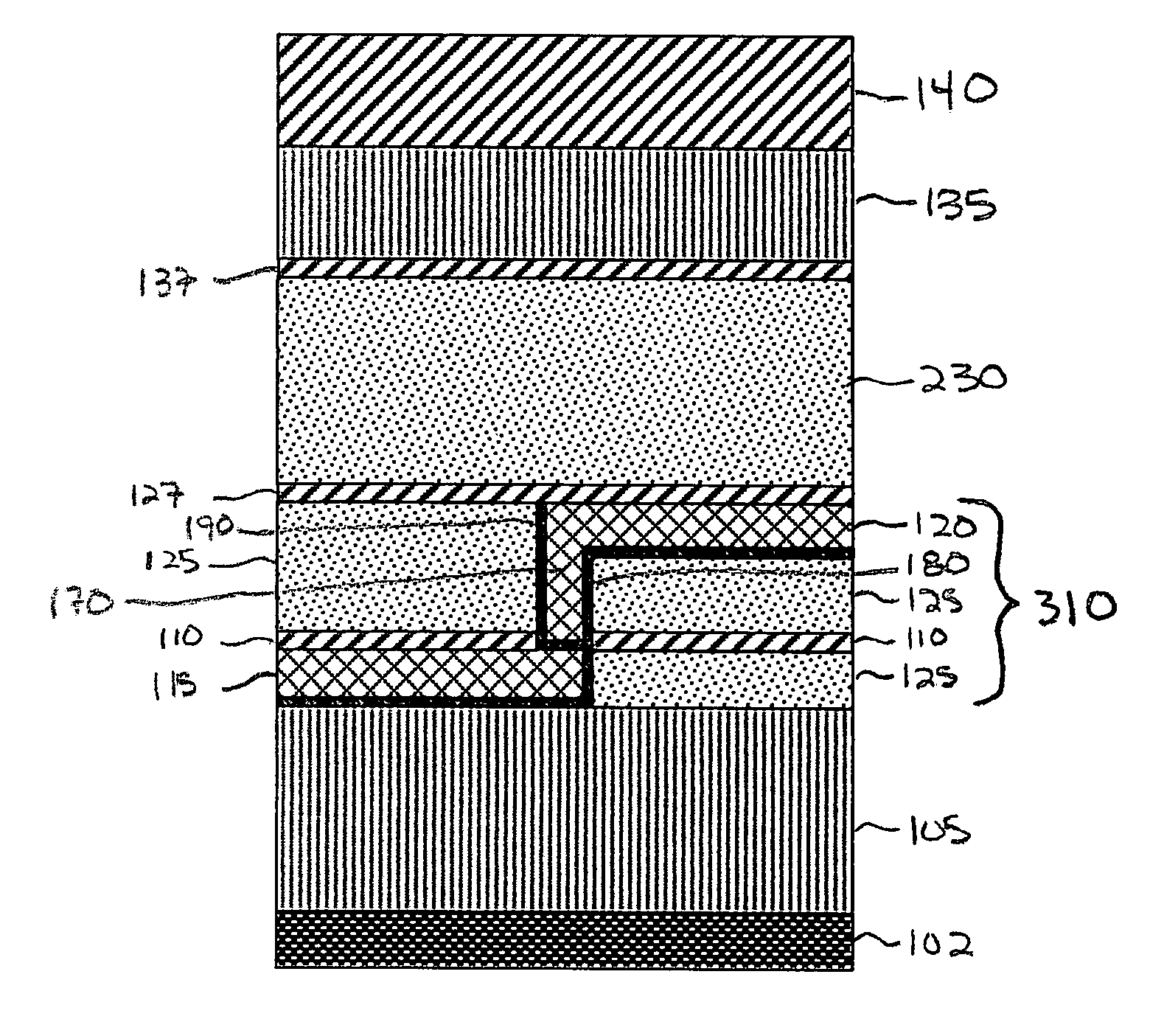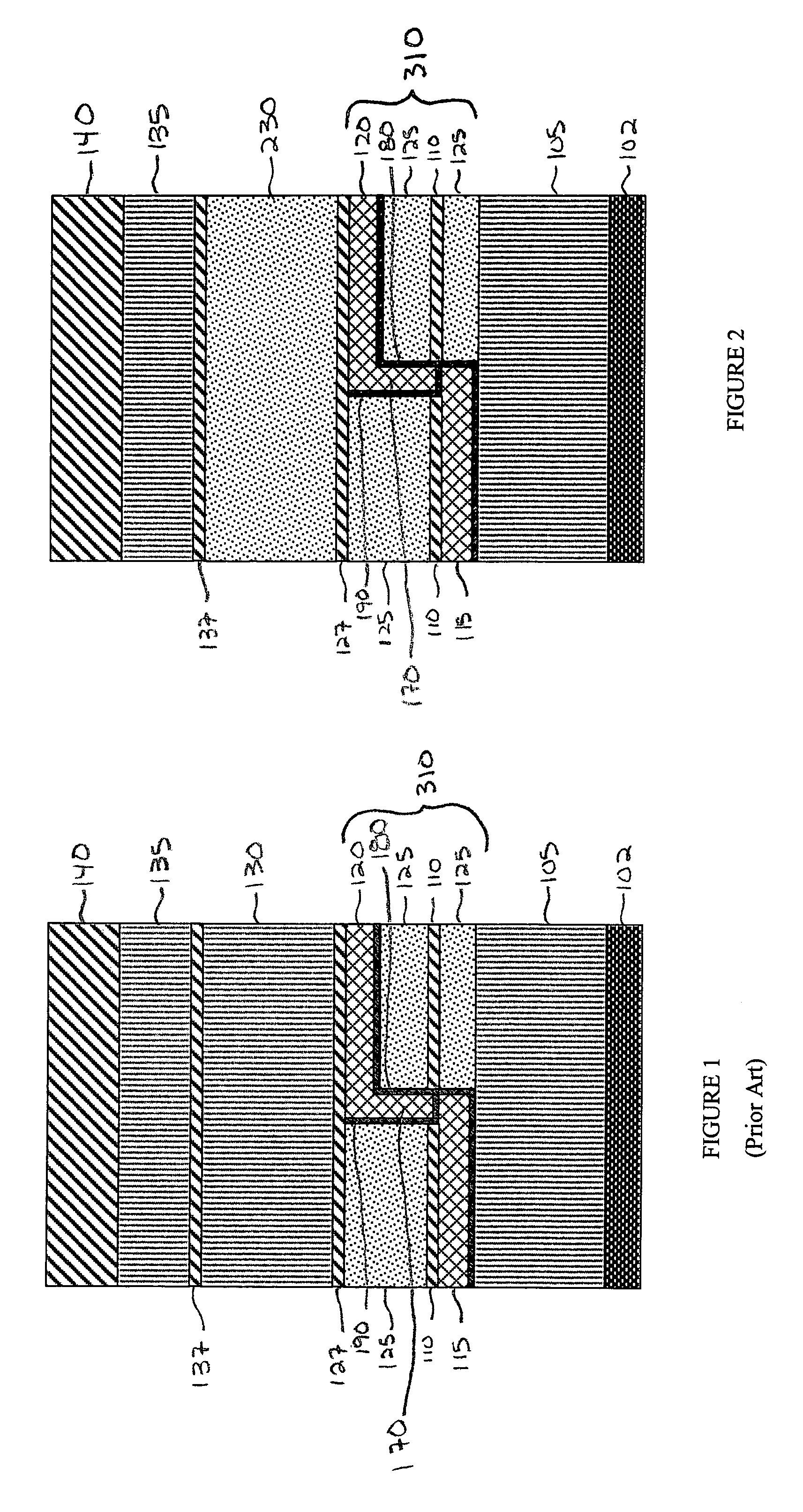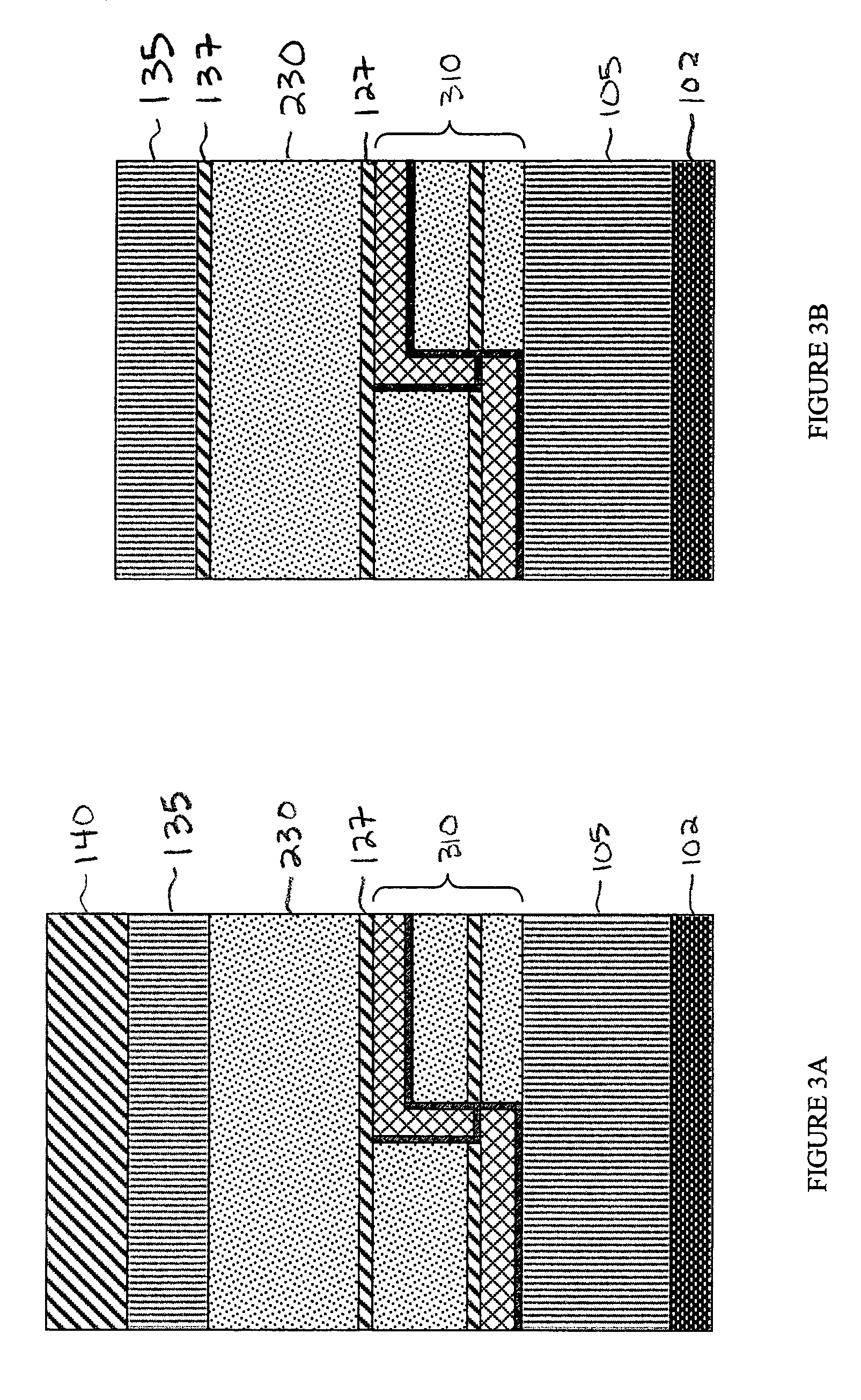Stress-relief layer for semiconductor applications
a stress-relief layer and semiconductor technology, applied in semiconductor devices, semiconductor/solid-state device details, electrical apparatus, etc., can solve problems such as cracks in “hard” dielectrics, increased rc signal delay, and increased resistan
- Summary
- Abstract
- Description
- Claims
- Application Information
AI Technical Summary
Benefits of technology
Problems solved by technology
Method used
Image
Examples
Embodiment Construction
[0010]While the making and using of various embodiments of the present invention are discussed herein in terms of silicon low-k (“SiLK”) dielectric material, it should be appreciated that the present invention provides many inventive concepts that can be embodied in a wide variety of contexts. The specific embodiments discussed herein are merely illustrative of specific ways to make and use the invention, and are not meant to limit the scope of the invention.
[0011]The present invention can reduce the thermo-mechanical stress on vias and reduce cracking in the hard dielectric. Exemplary embodiments of the present invention can provide this by introducing a stress-relief layer between the vias and the hard dielectric layer. Such a stress-relief layer can include a “soft” dielectric material, such as a low-k insulating material.
[0012]FIGS. 1–3D are provided for illustrative purposes, and the various features therein are not necessarily shown to scale.
[0013]FIG. 1 diagrammatically illus...
PUM
 Login to View More
Login to View More Abstract
Description
Claims
Application Information
 Login to View More
Login to View More - R&D
- Intellectual Property
- Life Sciences
- Materials
- Tech Scout
- Unparalleled Data Quality
- Higher Quality Content
- 60% Fewer Hallucinations
Browse by: Latest US Patents, China's latest patents, Technical Efficacy Thesaurus, Application Domain, Technology Topic, Popular Technical Reports.
© 2025 PatSnap. All rights reserved.Legal|Privacy policy|Modern Slavery Act Transparency Statement|Sitemap|About US| Contact US: help@patsnap.com



